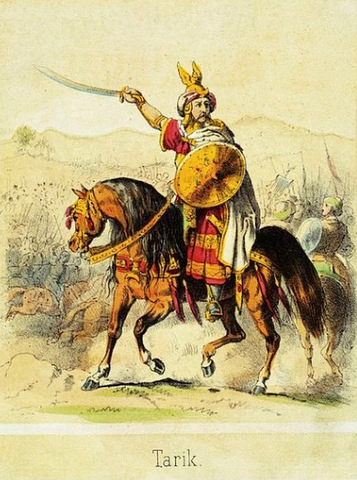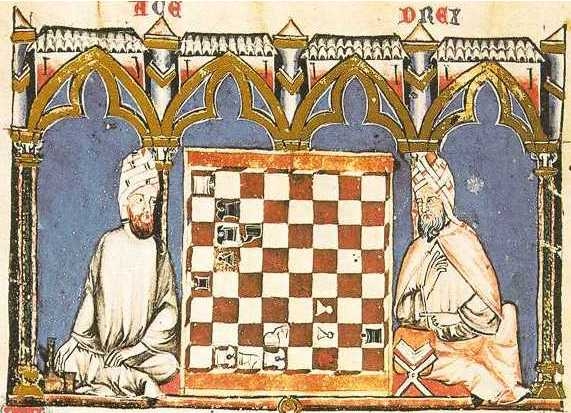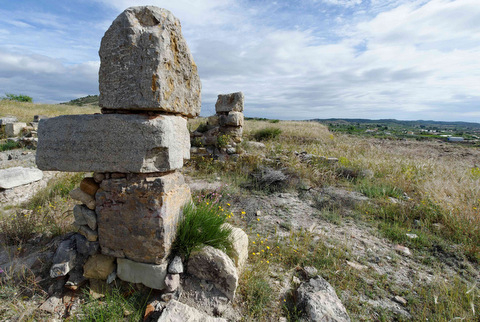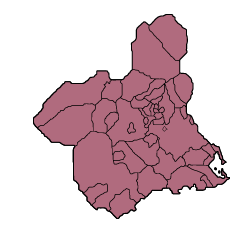- Region
- Águilas
- Alhama de Murcia
- Jumilla
- Lorca
- Los Alcázares
- Mazarrón
- San Javier
-
ALL AREAS & TOWNS
- AREAS
- SOUTH WEST
- MAR MENOR
- MURCIA CITY & CENTRAL
- NORTH & NORTH WEST
- TOWNS
- Abanilla
- Abarán
- Aguilas
- Alamillo
- Alcantarilla
- Aledo
- Alhama de Murcia
- Archena
- Balsicas
- Blanca
- Bolnuevo
- Bullas
- Cañadas del Romero
- Cabo de Palos
- Calasparra
- Camping Bolnuevo
- Campo De Ricote
- Camposol
- Canada De La Lena
- Caravaca de la Cruz
- Cartagena
- Cehegin
- Ceuti
- Cieza
- Condado de Alhama
- Corvera
- Costa Cálida
- Cuevas De Almanzora
- Cuevas de Reyllo
- El Carmoli
- El Mojon
- El Molino (Puerto Lumbreras)
- El Pareton / Cantareros
- El Raso
- El Valle Golf Resort
- Fortuna
- Fuente Alamo
- Hacienda del Alamo Golf Resort
- Hacienda Riquelme Golf Resort
- Isla Plana
- Islas Menores & Mar de Cristal
- Jumilla
- La Azohia
- La Charca
- La Manga Club
- La Manga del Mar Menor
- La Pinilla
- La Puebla
- La Torre
- La Torre Golf Resort
- La Unión
- Las Palas
- Las Ramblas
- Las Ramblas Golf
- Las Torres de Cotillas
- Leiva
- Librilla
- Lo Pagan
- Lo Santiago
- Lorca
- Lorquí
- Los Alcázares
- Los Balcones
- Los Belones
- Los Canovas
- Los Nietos
- Los Perez (Tallante)
- Los Urrutias
- Los Ventorrillos
- Mar De Cristal
- Mar Menor
- Mar Menor Golf Resort
- Mazarrón
- Mazarrón Country Club
- Molina de Segura
- Moratalla
- Mula
- Murcia City
- Murcia Property
- Pareton
- Peraleja Golf Resort
- Perin
- Pilar de la Horadada
- Pinar de Campoverde
- Pinoso
- Playa Honda
- Playa Honda / Playa Paraíso
- Pliego
- Portmán
- Pozo Estrecho
- Puerto de Mazarrón
- Puerto Lumbreras
- Puntas De Calnegre
- Region of Murcia
- Ricote
- Roda Golf Resort
- Roldan
- Roldan and Lo Ferro
- San Javier
- San Pedro del Pinatar
- Santiago de la Ribera
- Sierra Espuña
- Sucina
- Tallante
- Terrazas de la Torre Golf Resort
- Torre Pacheco
- Totana
- What's On Weekly Bulletin
- Yecla


- EDITIONS:
 Spanish News Today
Spanish News Today
 Alicante Today
Alicante Today
 Andalucia Today
Andalucia Today
The Moors in Begastri
Begastri abandoned
To read the earlier parts of the history of Begastri:
Visitor Information and introduction, Begastri Cehegin
The Iberians in Begastri, Click Iberians in Begastri
The Romans in Begastri, Click Romans in Begastri
The Visigoths in Begastri, Click Visigoths in Begastri
 The splendour of Visigoth Begastri was always threatened by its most dangerous enemy- Visigoth nobility, who spent their 2 centuries of rule in Hispania ( now Spain) in a constant state of internal conflict and finally brought about the downfall of their own kingdom.
The splendour of Visigoth Begastri was always threatened by its most dangerous enemy- Visigoth nobility, who spent their 2 centuries of rule in Hispania ( now Spain) in a constant state of internal conflict and finally brought about the downfall of their own kingdom.
This came about when King Witiza, (ruled 694 to 710) named his son Agila as heir to the throne, bucking the Visigoth tradition of an elected monarch. When Witiza died in the year 710, the leading noblemen chose Roderic, the duke of the Bética province, as the new king of Hispania, and the supporters of Agila hatched a plot to overthrow him. In order to increase their chances of success they offered a deal to Count Julián of Ceuta. In return for his support, the Moors would receive the booty captured in the struggle, a good idea, but one which then showed the Moors the vulnerability of the Visigoth Kingdom, demonstrating just how easy invasion could be.
 The downfall of the Visigoths began when Musa, the Moslem governor of northern Africa, ordered his troops to cross the Straits of Gibraltar, and General Tarik landed at Gebel Tarik (Gibraltar) before advancing into the south of the peninsula. Roderic came to meet the invaders from Vasconia, but the Moors defeated the Visigoth army at the battle of Guadalete on 19th July 711, slaughtering the King and most of the Visigoth nobility. The Moorish victory not only cost Roderic his life, but also marked the end of the Visigoth kingdom of Toledo: Islamic troops quickly completed their conquest of Visigoth Hispania, facing little opposition in their march to the Cantabrian coast and the foothills of the Pyrenees.
The downfall of the Visigoths began when Musa, the Moslem governor of northern Africa, ordered his troops to cross the Straits of Gibraltar, and General Tarik landed at Gebel Tarik (Gibraltar) before advancing into the south of the peninsula. Roderic came to meet the invaders from Vasconia, but the Moors defeated the Visigoth army at the battle of Guadalete on 19th July 711, slaughtering the King and most of the Visigoth nobility. The Moorish victory not only cost Roderic his life, but also marked the end of the Visigoth kingdom of Toledo: Islamic troops quickly completed their conquest of Visigoth Hispania, facing little opposition in their march to the Cantabrian coast and the foothills of the Pyrenees.
There was some Visigoth resistance in the south-east, though, led by Duke Teodomiro, the governor of the province of Aurariola (Orihuela), which included the modern-day provinces of Alicante, Albacete, Murcia and the northern part of Almería. Eventually, in 713, Teodomiro saw that he could no longer repel the Moors’ advance and found himself obliged to sign a peace treaty with Abd Al-Aziz, the chief of the Moorish army in the Eastern coastal region. The terms of this treaty, known as the Pact of Teodomiro, ( pact of Tudmir) recognized Islamic sovereignty in Hispania, and handed over to the Moors the territories of Aurariola (Orihuela), Leucante/Lucentum (Alicante), Balantala (Villena or Valencia), Mula, Eliocroca (Lorca), Begastri (Cehegín) and Eio (Hellín or Elche), as well as establishing the payment of tributes in return for peace and religious freedom. By the same treaty Teodomiro was granted political autonomy in his government of the region, which was known as the kingdom of Tudmir, and remained in power throughout his lifetime, being succeeded by his son.
After this the Moors imposed their dominance throughout the Iberian peninsula and named their Islamic kingdom Al-Ándalus. Sevilla became the first capital, and Abd Al-Aziz the first “walí”, or governor. Al-Ándalus soon became an Emirate, or province, of the Omeya Caliphate, which was an Islamic Empire governed from Damascus in Syria. The land included in this Empire included northern Africa, the Arabian peninsula and the Near East.
 Population of the newly conquered territories was a slow process, the gradual relocation of various ethnic groups, the Egyptians, Syrians, Yemenis, Berbers, each adding to the cultural melting pot within established communities.
Population of the newly conquered territories was a slow process, the gradual relocation of various ethnic groups, the Egyptians, Syrians, Yemenis, Berbers, each adding to the cultural melting pot within established communities.
There are no written records to help historians and investigators work out what happened in towns such as Begastri when the Moorish population first started to arrive, no documentation gives an indication of how many people came, whether the native population left or stayed, and whether the new settlers moved into the existing town temporarily or built their own accommodation outside.
Its unknown whether the new settlers imposed their religious beliefs on those living in towns or whether fiscal incentives were offered to persuade Christians to embrace the Muslim religion.
Or whether the two lived side by side.
The population in the north and north-west is not thought to have been particularly large, and it is believed that the administrative centre controlling this area would have been in Mula, as this is the only settlement mentioned in documentation relating to this period.
In 825, the city of Mursiya ( Murcia) was founded by the Cordobate Emir Abderrahman II and the agricultural settlements became increasingly important, their job to supply food to the growing City.
A series of new fortifications were built in elevated locations, in Calasparra, Caravaca, Cehegín, Celda, Moratalla, Bullas, Alquipir, Canara, Pliego, Mula and Benizar, the former towns of Begastri and the Cerro de la Almagra in Mula virtually abandoned.
 The new settlers chose to build their own communities and either not integrate with the remaining population, or live in their abandoned towns.
The new settlers chose to build their own communities and either not integrate with the remaining population, or live in their abandoned towns.
This was the case with Begastri and the other major Visigoth settlement in the area, the Cerro de la Almagra in Mula, both abandoned, new accommodation built in the location of the existing towns of Cehegín and Mula.
In the case of Begastri, the tribe which settled in the area, the Zenehegis ( from which Cehegín gained its name) decided to build on the Puntarrón hill, about 3km from Begastri, and although some farmers remained in the urban nucleus of Begastri until the 10th century the old town remained largely uninhabited.
And slowly Begastri crumbled, used as a shelter by shepherds, it´s stone carted off into the new settlements to be used as building materials, slowly covered by earth and vegetation until it blended into the hillside and was forgotten.
Although there were episodes of rebellion and the inevitable power struggles, relative peace ensued until the 13th century when everything changed again, as the Catholic forces of Aragón and Castile swept southwards, reconquering the lands occupied by the Moors: The Reconquist had begun.
Cartagena
El Carmoli
Islas Menores and Mar de Cristal
La Manga Club
La Manga del Mar Menor
La Puebla
La Torre Golf Resort
La Union
Los Alcazares
Los Belones
Los Nietos
Los Urrutias
Mar Menor Golf Resort
Pilar de la Horadada
Playa Honda / Playa Paraiso
Portman
Roldan and Lo Ferro
San Javier
San Pedro del Pinatar
Santa Rosalia Lake and Life resort
Terrazas de la Torre Golf Resort
Torre Pacheco
Aledo
Alhama de Murcia
Bolnuevo
Camposol
Condado de Alhama
Fuente Alamo
Hacienda del Alamo Golf Resort
Lorca
Mazarron
Puerto de Mazarron
Puerto Lumbreras
Sierra Espuna
Totana
Abaran
Alcantarilla
Archena
Blanca
Corvera
El Valle Golf Resort
Hacienda Riquelme Golf Resort
Lorqui
Molina de Segura
Mosa Trajectum
Murcia City
Peraleja Golf Resort
Ricote
Sucina
Condado de Alhama
El Valle Golf Resort
Hacienda del Alamo Golf Resort
Hacienda Riquelme Golf Resort
Islas Menores and Mar de Cristal
La Manga Club
La Torre Golf Resort
Mar Menor Golf Resort
Mazarron Country Club
Mosa Trajectum
Peraleja Golf Resort
Santa Rosalia Lake and Life resort
Terrazas de la Torre Golf Resort
La Zenia
Lomas de Cabo Roig

CAMPOSOL TODAY Whats OnCartagena SpainCoronavirusCorvera Airport MurciaMurcia Gota Fria 2019Murcia property news generic threadWeekly Bulletin
